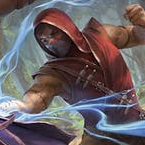Welcome back to my Bolstering the Beginner series. If you've been following the series, you now have a better understanding of what information your cards convey and how playing them in specific sequences dictates your combat role.
Flesh and Blood is dynamic and unpredictable, but there are some classic strategies, seen in numerous other cards games, that have found their form in Flesh and Blood. These methods are all within your grasp when it comes to your collection and what cards you choose to bring to the fight. Of course, heroes all have signature strategies- and strategies they'd look ridiculous to attempt!
But when it comes down to it, these archetypal playstyles usually resonate with your personality and who you are. So, how well do you know yourself? Let’s assess.
AARGH SMASH!!!
Maybe you love to inflict massive damage upon your enemies. You send wave after wave of hit effects and buckets of damage. Your plays constantly threaten your opponent’s life total, and ultimately that's the path you follow to victory. If that sounds like you, you might be an Aggro player.
Aggro players are laser-focused on one goal: eliminating the enemy before they eliminate you. Every card in your deck was explicitly chosen to inflict the most damage for the least amount of resources. Even so, your equipment is not really designed to defend but is chosen to accelerate your hyper-combative strategy.
Ira is a definitive Aggro hero.
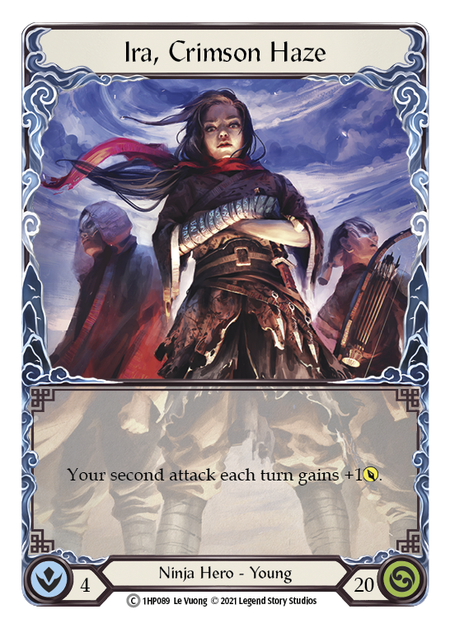
Ira’s ability grants an unconditional boost to your second attack. This tells me two things. First, I want to attack twice and gain that bonus. Second, I want the second attack to hurt. So, let’s unpack that first tenet. You need to attack twice to gain Ira’s buff, so why not keep attacking? Maybe a third time, even a fourth if you play your cards right. But that will require you to commit most or all of your hand, so make it count.
That brings us to the second postulate. Make it hurt! Many aggro deck strive to impose pressure. You pose the questions to the opponent. Will they block with most of their hand? Or will they let you hit them? How many times? Was it worth the exchange?
As an aggro player, you have to keep one thing in mind: can you drain your opponent’s health before they drain yours? Your opponents will eventually learn your playstyle and grow to expect that type of strategy based on the heroes you choose to employ. They may not defend and may choose to take all the damage you deal. Why would they do this? Because they see their hand and know they can do more to you. Eventually, someone has to block to survive.
If you are genuinely an aggro player, don’t let it be you who is forced to block. Keep the goal in sight. Defeat them before they defeat you!
I'm in Control
But let’s consider that your opponent doesn’t want to attack you. Why wouldn’t they? The object of the game is to drain each other’s health, right? Aggro players thrive in the early game, but once they’ve used all of their efficient high-damage attacks, what have they left?
That’s where Control players shine. They favor the late game and rely on you, the aggro player, to spin your wheels and beat your fists against a wall of unwavering defense. In contrast to aggro players, control players specialize in excellent and efficient defenses. They equip impressive armor and fill their decks with what feels like a never-ending supply of defense reactions and life-gain effects. Cards like Fate Foreseen, Soul Shield, and Unmovable, for example.
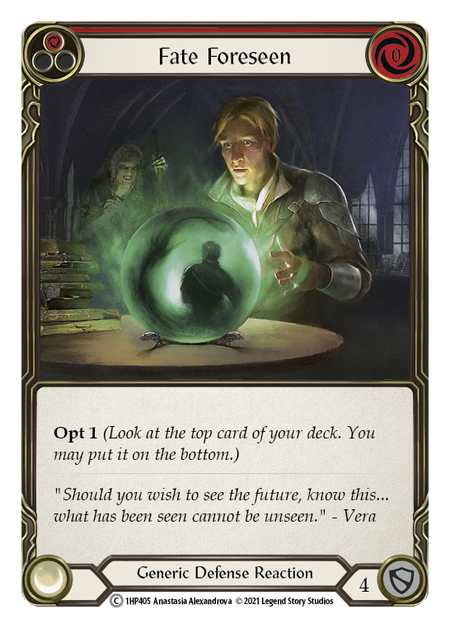
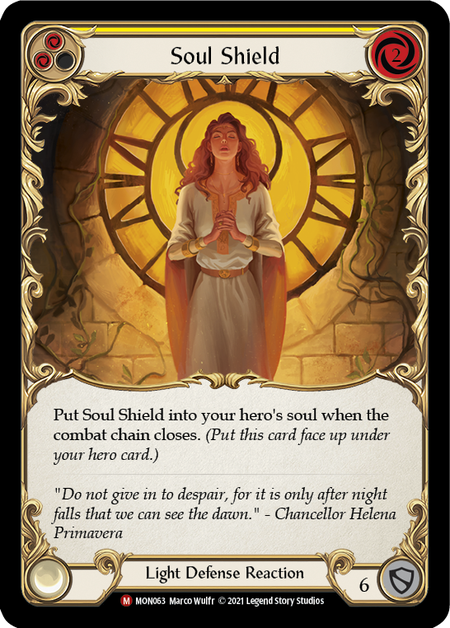
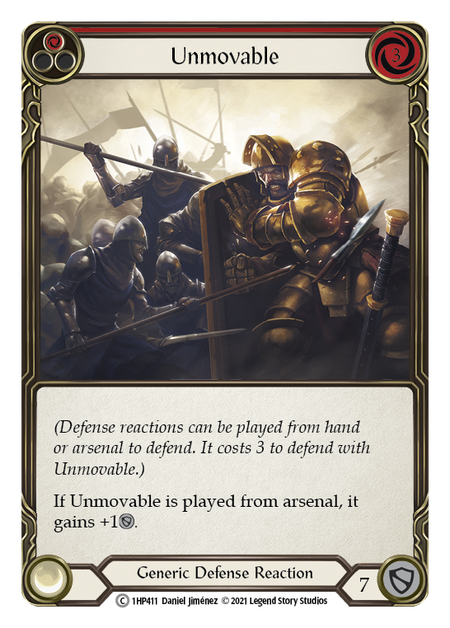
When it comes to the free defense reactions, like Sink Below and Fate Foreseen, not only is the Control player mitigating attacks, but they’re also gaining incremental effects along the way. The added card filtering and opting allows them to continue to find more defense reactions to quell their enemies' strategies.
So how do you win as a Control player?
With your weapon!


Having a weapon that presents a decent amount of damage will carry you to victory. Anothos is the trusted hammer of Bravo, a reliably controlling hero. As you pitch to attack with it, you do two things. Firstly, you present 4-6 damage. Secondly, you place cards back into your deck. Repeating this process offers you the opportunity to “outlast” your opponent. YOU dictate the flow of the game. YOU decide where when the final phase begins. YOU are in control.
Wait One Second while I Set Up...
Weathering the storm and hoping to survive till the end doesn’t always work. Control players need their opponents to attack them. But what if they don’t? What if your opponent has a late-game plan of their own? This is the realm of the Combo player.
Heroes like Viserai do this well. As Viserai defends your attacks with Reduce to Runechant and Runeblood Barrier, he is slowly accruing “on-board” resources: Runechants!
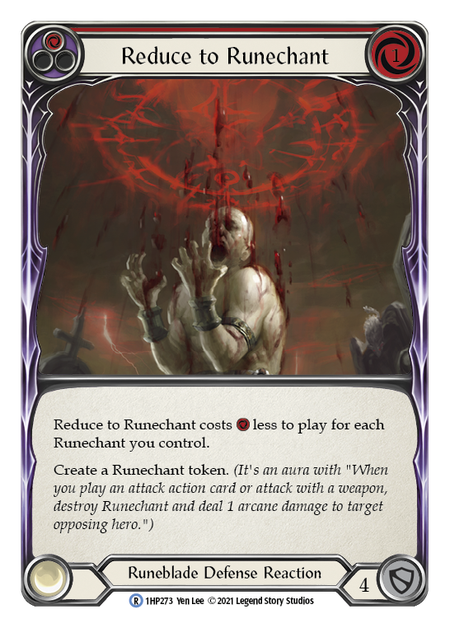

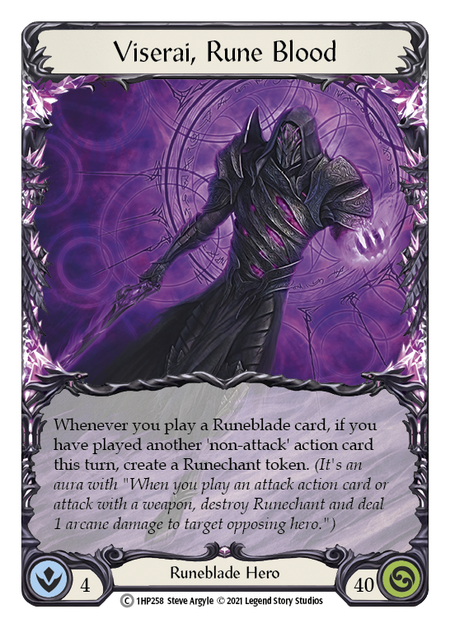
Little by little, these mystic runes multiply until there is an excessive amount of them to deal with. The Viserai player has slowly “setup” an endgame (or at least a devastating) barrage of damage that their opponent cannot deal with.
There are numerous ways to “set up” an end-game scenario. Potions, Mech Items, Runechants, etc. Combo players use these effects to build and build until your opponent can no longer handle the advantage that you have “set up.” A Combo player needs to be taken out before they reach that endgame.
Tempo is Universal
As you may have assessed, each of these three playstyles works well against another.
- AGGRO has a speed advantage over COMBO.
- COMBO can overcome pesky CONTROL decks.
- CONTROL strategies severely stunt AGGRO plays.
But there is one strategy that all players strive for, despite their playstyle. That is TEMPO!
Ask yourself the question, “Am I winning right now?” Don’t just think of your life total; look at your hand, board, and deck size. Is there a card in your arsenal? Is there a card in theirs? If your opponent is constantly attacking you and no damage is getting through, the tempo remains even. You are trading cards back and forth, and the state of the game is barely changing. There will come a moment when you can take the tempo from your opponent.
Conversely, if you are attacking your opponent and they are forced to block with their whole hand, never getting the chance to set up their board, you have seized the tempo. Don’t lose it! The battle for tempo is the true nature of Flesh and Blood.
Regardless of your strategy and playstyle, there will come a time in the battle where you can seize the advantage over your opponent. When you achieve this, your path to victory becomes clear. But sometimes, your opponent stabilizes and regains a bit of that tempo, maybe even taking it back entirely. And personally, I believe that’s a battle worth being in. That’s where the true test of your skill emerges.


